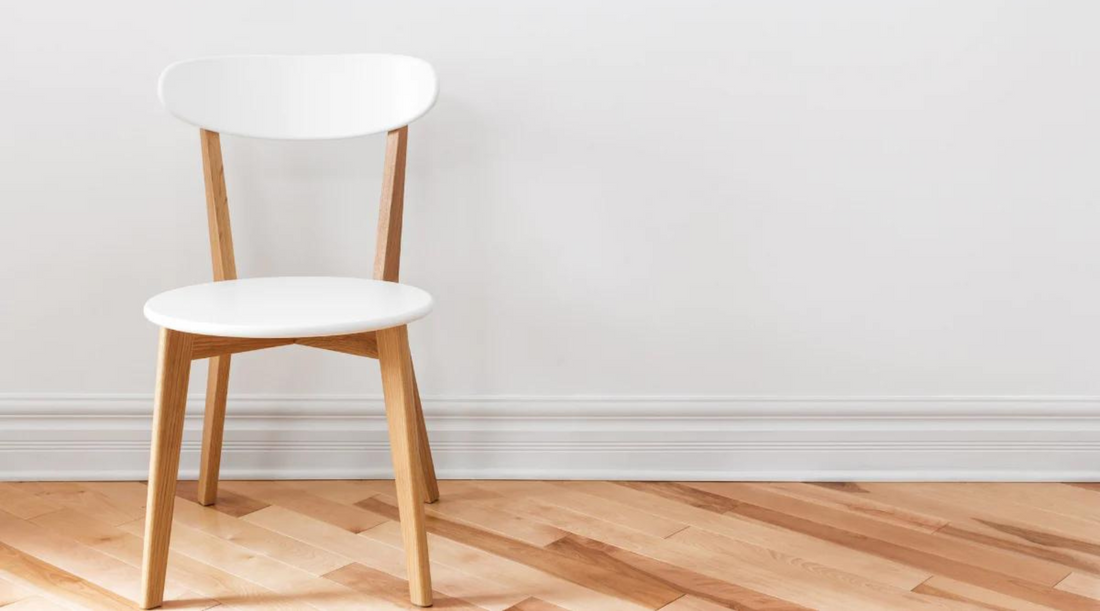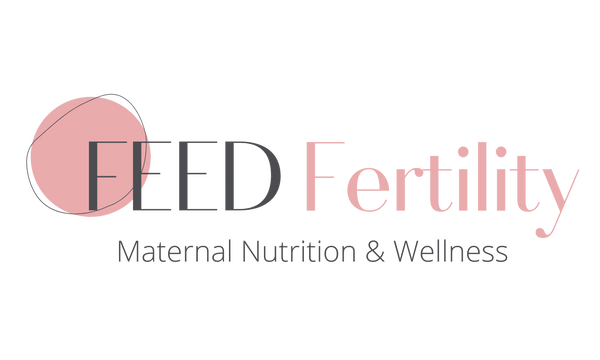
How To Sit Less (and Move More)
“Sitting is the new smoking”. You may have heard that before - probably from your doctor. At my old job, my colleague and I used to joke that we get paid to push buttons for a living. As silly as that sounds, it’s not inaccurate. So many of us make a living from sitting in a chair, staring at a screen and pushing buttons for hours on end. In fact, it’s estimated that over 75% of North Americans are “professional sitters”. Never in our history have we been this inactive, the long-term effects of which are still to be seen. Already the list of ills associated with hours of uninterrupted sitting includes elevated risk of heart disease, diabetes, cancer and other conditions (1). The World Health Organization now ranks physical inactivity as 4th largest killer globally, behind obesity.
Now, you may be thinking, “That’s well and good Ewa, but it doesn’t affect ME… I work out!” Well… it turns out that even if you are hitting all your physical activity goals but remain seated 8 or more hours a day you can’t undo the negative effects of too much sitting (2). Yup, the only solution seems to be to add more movement into your day; with the goal of 60–75 minutes per day. And we’re here to help you do just that. First, why all the fuss? Just how bad is sitting anyway?

Aches & Pains: The seated position puts huge stress on your back muscles, neck, and spine. Poor posture may also cause poor spine health such as compression in the discs in your spine, leading to premature degeneration, which can be very painful. Sitting also causes the hip flexor muscles to shorten, which can lead to problems with hip joints over time.
Metabolism, Weight & Diabetes: As our muscles switch into "dormant" mode, it compromises their ability to break down fats and sugars. Sitting is thought to slow the metabolism, which affects the body's ability to regulate blood sugar and blood pressure. While it isn’t exactly clear why, research shows that sitting changes the way your body reacts to insulin, the hormone that helps it burn sugar and carbs for energy. A Danish cohort study, for example, observed a 35% risk increase of diabetes associated with people who sat a total of 10 hours or more per day (3).
Varicose Veins & DVT: Sitting for extended periods can cause blood to “pool” in the legs, which may lead to varicose or spider veins. The pressure in our veins causing them to swell or bulge. While “achey”, varicose veins don’t usually pose a serious risk, but they can (in rare cases) lead to blood clots known as Deep Vein Thrombosis (DVT), which is a serious problem. If part of a blood clot in the leg vein breaks off and travels, it can cut off the blood flow to other parts of the body, including the lungs, which can cause a pulmonary embolism.
Cardiovascular Health: Sitting for long periods has also been linked to heart disease. One study found that men who watch more than 23 hours of television a week have a 64 percent higher risk of dying from cardiovascular disease than men who only watch 11 hours of television a week (4). Some experts say that people who are inactive and sit for long periods have as much as a 147 percent higher risk of suffering a heart attack or stroke.
Cognition: Many studies also show correlations between physical activity (or lack thereof) and a decline in cognitive function (5). A recent study by researches at the University of California also found that people who reported more sitting had thinner brain structures (6). Thinning of the medial temporal lobe (which is crucial to the formation of new memories) can be an early sign of cognitive decline and dementia. Although the researcher cannot confirm that sedentary behaviour is responsible for the thinning, there’s enough of a correlation that many long-term studies are being launched in this area.
Aging: If all that wasn’t enough, studies now show that extended sitting can shorten our life as well. A Swedish study published in the British Journal of Sports Medicine suggests that sitting accelerates aging by shortening our telomeres (7). Telomeres are the "caps" at the end of each strand of DNA that protect our chromosomes from deterioration. Without telomeres, DNA strands become damaged and our cells can’t do their job, and our bodies age.
Now that we understand the dangers of sitting, what can we do about? Most of us still “push buttons for a living”. In fact, there are many ways to add activity to your day. Adding small breaks and activities into your work routine can go a long way in improving your health.

9 Ways To Move More & Sit Less
1. Start with a Stretch
Try waking up an extra 15 minutes earlier tomorrow and before you hit the shower, take some time to stretch. Only have 5? No problem. Try these stretches out for a quick wakeup. Stand up and do a Triceps stretch followed by an Overhead stretch (1 min total). Then a Trunk rotation and Forward bend (a great stretch for your abs, spine, lower back and hamstrings) for another 2 minutes. Get on the ground and do Hamstring stretch, followed by a Butterfly Groin, and Lying Hip Stretch (2 minutes). Just a few minutes per day can help you keeps your muscles long, lean, flexible, and less prone to injury.
2. Maximize Your Commute
Your morning commute doesn’t have to be all about traffic and exhaust fumes. You can use your commute as an opportunity to get moving. If possible for you, instead of driving, try biking or walking to work instead. Live too far? What about driving part of the way and parking your car a bit away from the office - ideally near a scenic walking route. Depending on where you live, you might even find this strategy better for avoiding the most congested car traffic and parking limitations.
3. Ditch The Elevator
If you work in an office building with multiple floors, avoid the temptation of taking the elevator and try the stairs instead. Even doing this a couple times a day (i.e. morning and after lunch) can add some good cardio and muscle tone to your routine. Live in a condo or apartment? Guess what… same rule applies.
4. Take Movement Breaks to Break Up Tasks
Just checked off a task from your to-do list? Finished a meeting or completed a project? Savour the moment and take a break. Taking 5-10 min between tasks is a great opportunity to do some simple stretches (like torso twists or leg extensions) or exercises (like lunches and swats). Taking movement breaks between tasks is also a great way to break up your day into blocks of time, which has shown to increase productivity.

5. Get Outside
Nice day? Get out of the office. There’s nothing like a good walk around the block to add some movement and fresh air to your day. It’s a great way to clear the mind and recharge the batteries. If you need some motivation, ask a colleague to join you, or better yet, start a walking club in the office.
6. Office-friendly Workout Gear
Stress balls are not just for taking the edge off for when the boss is acting up again. They’re also great for adding a bit of movement to your hands and wrists. If your office allows it, try also bringing in some simple fitness gear like resistance bands or small weights to fit in a few reps between meetings. A stability ball can be a great tool for wall squats or other exercises during the day. You can also sit on it instead of a chair, which can help strengthen the abdominals.
7. Active Meetings
Meetings don’t need to be restricted to boardrooms, chairs and conference calls. Make meeting active and interactive by adding some movement. Stand up while speaking/presenting, walk around the room, or pace around your office while on the phone. (It can be great for getting those creative juices flowing too).
8. Standing Desk
Having the option to stand for even a part of your day can be very beneficial. Consider investing in an adjustable height desk or if possible, ask HR about getting one for you. There are lots of great options out there for both fully adjustable standing desks, and standing desk extensions.
9. Keep Yourself Accountable
Finally, don’t just read about getting active. GET ACTIVE. Put it all into practice and make sure to keep yourself accountable. Only you will know what system will work best for you. Whatever it is, build the structure in your day that will keep you moving. For example, if you get distracted easily and know you’ll forget to do all this once the day gets rolling, create reminders for yourself and program them into your calendar.
Seriously… do it now. Stop reading this. Get movin’ already!

MORE LIKE THIS
Do you dream of a good night's sleep? In Secrets to A Blissful Sleep you'll learn the 4 key ways to improve your sleep habits, and your health.
ABOUT THE AUTHOR
Ewa Reid is a Registered Holistic Nutritionist, certifying Fertility Support Practitioner, nutrition & fertility educator, wife, and mother. You can learn more about Ewa on our About page.
